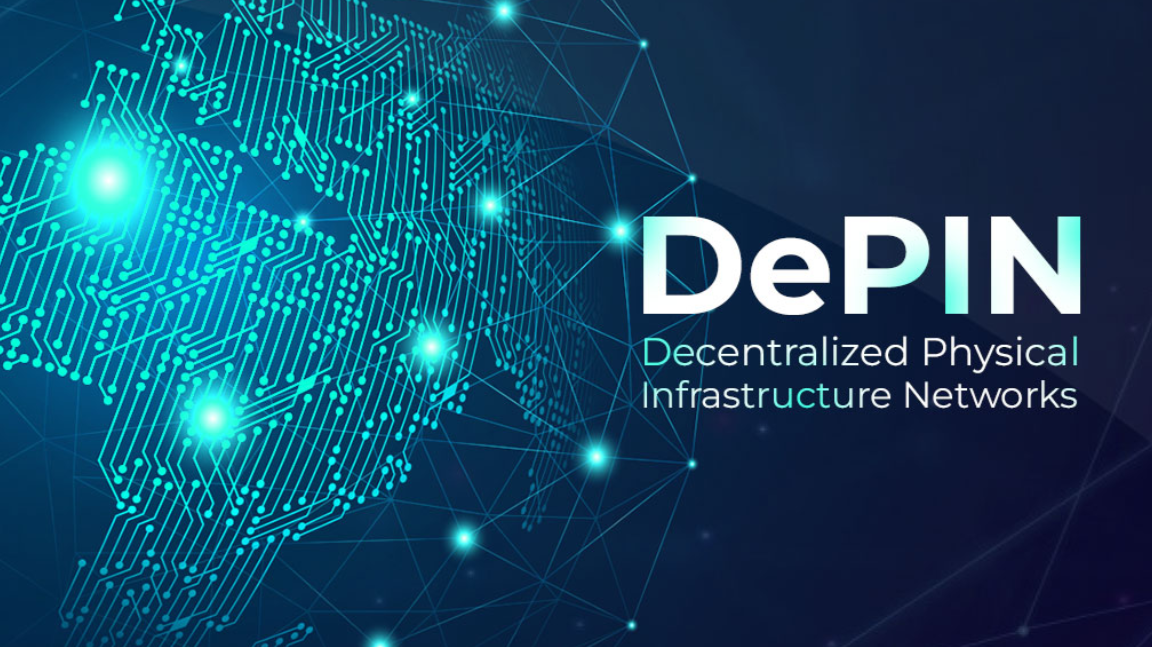What is DePIN
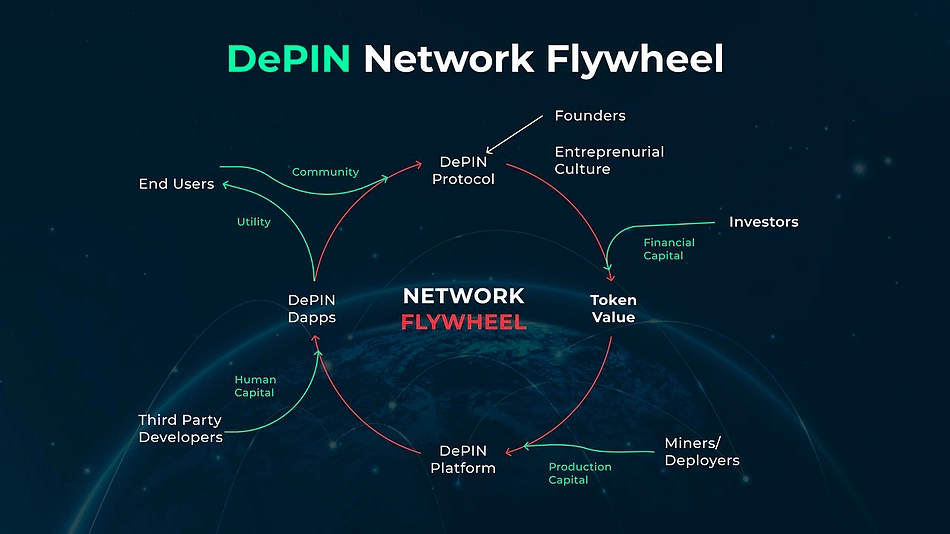
DePIN refers to the development of blockchain-based management systems for real-world facilities such as computing power and marketplaces for real-world data.DePIN utilises a cryptocurrency-driven incentive system to create a reward-based system for crowdsourcing physical infrastructure service providers while promoting decentralised alternatives to known legacy facilities.The concept of DePIN has a broad scope that encompasses many critical operational systems in industry and everyday life. With projects like IoTEX, Helium, Hivemapper, and the Natix network making significant attempts in this area, DePIN is becoming an industry to watch in the cryptocurrency space.
How DePIN works
DePIN creates a connection between the physical facility and the blockchain. In simple terms, the main players include the physical facility controlled by the provider, the middleware that connects the facility to the blockchain, and the public ledger that manages that connection for remittances.
Physical infrastructure: the physical facility can be various devices such as sensors, internet routers or solar panels. This is managed by private providers. Sometimes these providers already own these facilities before participating in the DePIN project. Think of a PoW (proof-of-work) blockchain network, where miners contribute computing power to protect the network. As many private providers as possible can contribute their facilities to DePIN.
Middleware: Middleware handles most of the connectivity work between the blockchain and the physical infrastructure. Similar to a Decentralised On-Premises Network (DON), it takes data from the outside world and passes it on to blockchain applications. Middleware plays a similar role. The middleware collects data about the activity on each private facility and passes it to the DePIN network.
Blockchain system: The data collected by the middleware is sent to the blockchain, which acts as a management and remittance system for providers and users. Based on the data provided by the middleware, the blockchain assigns demand to providers based on these activities and calculates the corresponding rewards. The rewards are sent in the form of cryptocurrency. On the user’s end, the blockchain also handles the procurement of resources, the pricing model is integrated into the remittance system, and the user pays for each service in a timely manner.
DePIN Classification
DePIN can be divided into two broad classifications:
Physical Resource Networks (PRNs) and Digital Resource Networks (DRNs).
PRNs are location-based decentralised physical resource networks. Providers in the network contribute hardware resources related to areas such as connectivity, mobility, energy, etc. to provide services. These resources are location-based and to some extent non-homogeneous, i.e., the services are localised (set in a particular location) and sometimes non-portable (fixed in a particular location).
DRNs are interchangeable networks of digital resource providers. Providers contribute resources such as computing power, shared bandwidth or storage facilities. These resources are not limited to a specific location or associated with location data.
DePIN is breaking boundaries and connecting the blockchain to the real world in a way never seen before. Here is the basis of how it works.
DePIN Benefits
1. Horizontal Scalability
DePIN allows facilities to increase their capacity in a more flexible manner. Instead of increasing the capacity of each resource, the network can add resources. This approach provides a high degree of flexibility, and facilities built with this system can easily scale up and down based on demand. The blockchain can control available resources and allocate demand. In low demand situations, some providers may experience lower workloads. In high demand situations, the network can reactivate idle resources, add more instances, and increase overall network capacity without any shifting. Depending on the available idle resources and DePIN’s rationing system, such a system could scale infinitely. Similar to the centralised service provider Amazon Scalable Service.
DePIN, like DeFi, is decentralising the infrastructure system, moving away from corporations to a group of individuals who collectively commit resources to building facilities. This system decentralises control of the facility to different providers – similar to miners in a PoW network. DePIN is an industrial DAO where everyone in the system contributes resources and has control based on their capacity. In a system where each provider has equal capacity, DePIN becomes (almost) completely decentralised.
2. Fair Pricing
DePIN’s pricing model is relatively different from traditional facilities. Factors affecting the pricing model include the costs incurred by private providers to run their respective facilities and other network-related factors. Additional costs associated with the platform are likely to be lower, as the platform itself does not need to contribute to the cost of these facilities.
Overall, DePIN’s pricing model is expected to be cheaper and pricing will be fairer as it takes into account the underlying factors without the unfair price inflation typically associated with facilities operated by centralised bodies. For a manpower-driven system, DePIN is more likely to consider affordability in its pricing model than the company.
3. Cost-Effective Operation
The DePI network costs virtually nothing to make the network operational; providers have a high degree of flexibility in the services they offer. For example, providers can contribute their facilities to multiple networks. Users will also pay a fair price for the services they receive from the network. DePIN is designed to provide the best possible service at the lowest possible cost, providing a cost-effective system.
4. No Licence Required
Anyone can contribute their resources to DePIN, and on the user side, anyone can access the services DePIN provides. There is no price haggling or user screening for these services. Once providers have the infrastructure they need, they can run provider-side accounts on DePIN as easily as anyone can deploy a liquidity pool on a decentralised trading platform or take out a loan from a money market.
5. Incentives
Incentives are a key tool in DePIN. For providers, they offer the opportunity for passive or active income, depending on how the DePIN operates. Individuals can also build an income stream primarily from DePINs. For example, projects like Nunet are looking to reduce unused computing resources through their AI-based marketplace for computing power. Providers can generate revenue from their facilities, which might otherwise be idle.
DePIN Disadvantages
DePIN is an emerging concept that has shown potential on paper and in early prototypes, but a number of factors may limit its growth, these include:
1. Impact of adoption phase on revenue
DePIN’s flywheel depends on the progress of the network, which is reflected in the value of the Token and the willingness of investors and providers to participate in the network. At the current stage, DePIN is still very new and only a small percentage of blockchain enthusiasts and facility owners are currently interested in participating in such a system. While this may change in the future, the DePIN concept faces a significant challenge in designing a system that attracts a sufficient number of providers and users to join the network and flywheel.
2. Technical complexity
As a concept, DePIN can be difficult to understand. For enthusiasts wishing to get involved in this area, the technical aspects can be daunting, at least in the beginning. Projects in this area need to make greater efforts to educate individuals at different levels.
3. Costs of Operating a Private Facility
The day-to-day operation of some facilities can incur considerable costs. This can be challenging for some providers, as private facilities rarely have access to external financial support.
4. Profitability
In order to attract providers, DePIN must be able to pay incentives that are at least equal to operating costs and maintain profitability. Attractiveness is proportional to the percentage of profit per operating cycle. At this stage, DePIN may struggle to pay attractive incentives as users and providers remain scarce.
DePIN Field Project
Wireless
Helium employs a multi-token system, with each token in the ecosystem playing a role in providing network resources and rewarding providers. hNTToken is burned by users to gain access to connectivity services, while MOBILEToken powers the Helium 5G project. owners of 5G hotspot bundles provide network coverage and earn MOBILEToken.
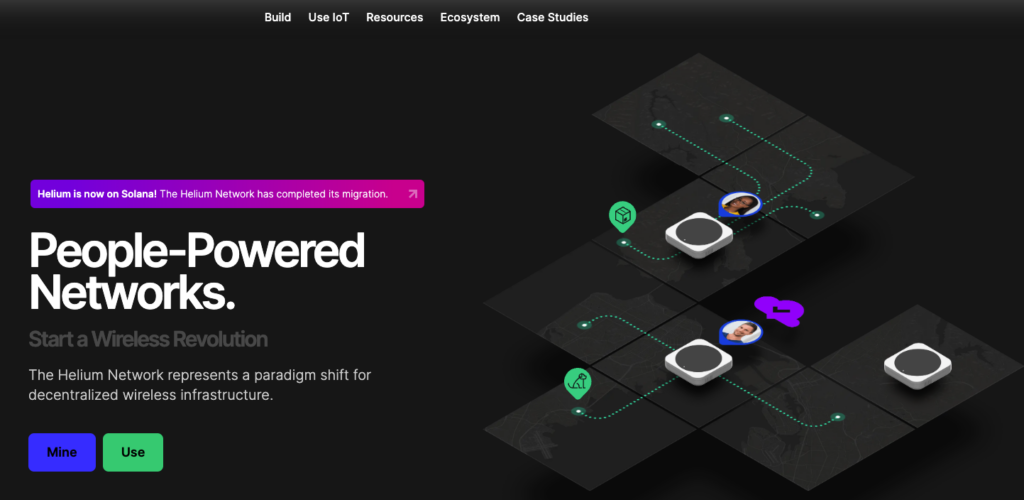
Geospatial
Location services are another niche area for DePIN. the PRN (Position Reference Network) incentivises providers to offer physical location services and rewards them with local cryptocurrencies. Such projects use sensors or community contributors to provide location data to the network, which computes this data to provide services such as area mapping.
Projects like Hivemapper are using the power of the community to build a crowdsourced map. Contributors can provide manual mapping resources or use Hivemapper’s CarLog. Users can mount the CarLog on their vehicles and enable the network to read location data while moving the device. These contributors will be rewarded with a corresponding number of HONEYTokens based on the area covered.
Mobility
Cars and other modes of transport have greatly improved the way people travel. However, beyond the infrastructural developments in automotive technology, not much attention has been paid to how car owners manage their cars and how much additional value they derive from them. The Mobility DePIN project is devising newer ways to manage vehicles, collaborate with other car owners and companies, and get rewarded in the process.
Wellness
Fitness apps promote healthy lifestyles. Some time ago, FitFi kicked off a short-lived craze for apps like this one that promote healthy lifestyles by rewarding users for completing specific fitness tasks. While these apps are no longer the sensation they once were, the DePIN project is operating in this space using a similar design. apps like Healthblocks reward users with specific health-related information so that healthcare companies and workers can make progress. Users can also connect their fitness devices to the app to track their fitness goals. Users are rewarded with HEALTHTokens for completing tasks or providing data.

Energy
DePIN projects in the energy sector claim to promote green energy generation by connecting renewable energy providers with companies that utilise this energy. These projects facilitate the collation of reliable energy supply data and use it to develop environmentally friendly energy practices. arkreen is a green energy decentralisation project that incentivises green energy providers to provide data on their energy facilities. The data that can be provided includes the capacity of solar installations and other similar data. The demand side for such applications includes Renewable Energy Certification (REC) issuers and green computing operators, who can access electricity data and use it to build applications and services.
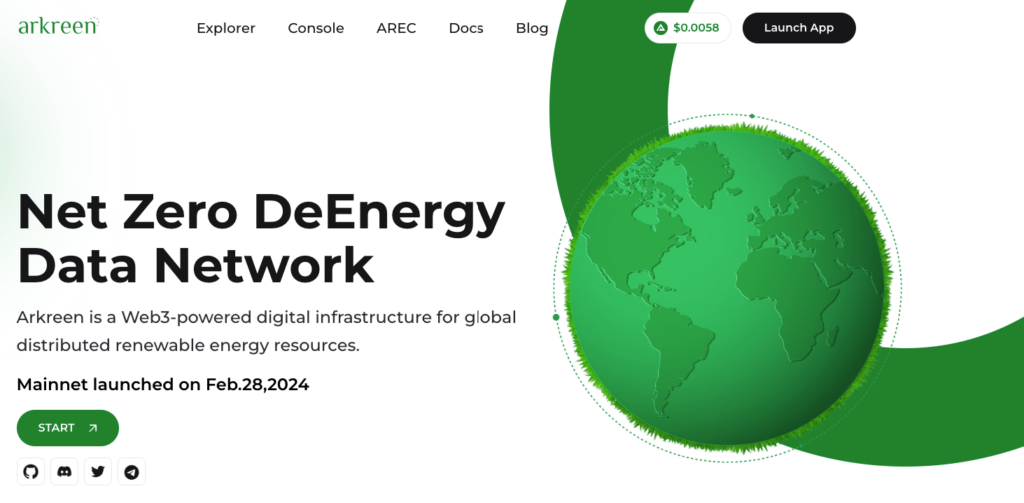
Storage Networks
Decentralised storage networks provide on-demand storage for users by incentivising providers to contribute storage space. Projects like Filecoin claim to work to make the internet safer and more efficient through decentralised data storage marketplaces, protocols and cryptocurrencies.The Filecoin blockchain records the storage space contributed by each provider and rewards contributors with Filecoin, while users pay for storage space rentals to securely store their data and files.
Compute Network
Decentralised computing networks provide retail computing infrastructure to users by pooling unused resources from private computing resource providers into a network. They create a marketplace for computing resources and incentivise providers to participate. Nunet is a marketplace for computing resources powered by artificial intelligence. It claims to promote a resource-efficient atmosphere for companies by making idle computing resources available to anyone. Providers of computing resources are rewarded with NTXToken for contributing to the marketplace. Companies and individuals can borrow available computing power and pay for it.

Bandwidth Network
The decentralised bandwidth network aims to optimise content delivery and reduce content delivery costs by incentivising private providers to share their bandwidth. By doing so, it enables existing video and media platforms to generate incremental revenues while users utilise shared bandwidth at a cheaper cost to deliver higher quality multimedia content. One project in this space is the Theta Network. theta is an Ethereum Virtual Machine (EVM)-compatible network consisting of a blockchain network and an edge network. the blockchain portion of the Theta handles financial remittances and smart contracts, while the edge network handles the storage and delivery of media assets. the Theta Network is an Ethernet-compatible virtual machine (EVM) network with an edge network. the Theta Network is a network that provides a platform for the delivery of media assets to users. Bandwidth providers are rewarded by earning THETAToken, and bandwidth can be shared across mobile devices, PCs and other devices.
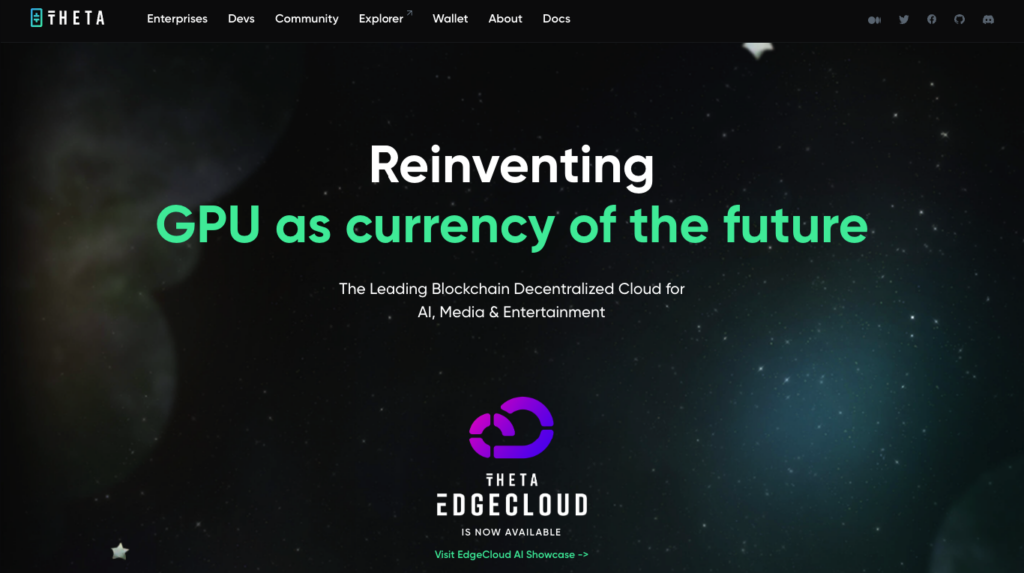
Summary
DePIN achieves decentralised management and operation of physical infrastructure through blockchain technology. Through smart contracts and cryptocurrency incentives, DePIN is able to effectively engage users and ensure the transparency, security and efficiency of the network.The core of DePIN lies in the organic combination of decentralised control, automated management and incentives, which allows it to show great potential and application prospects in multiple fields.

